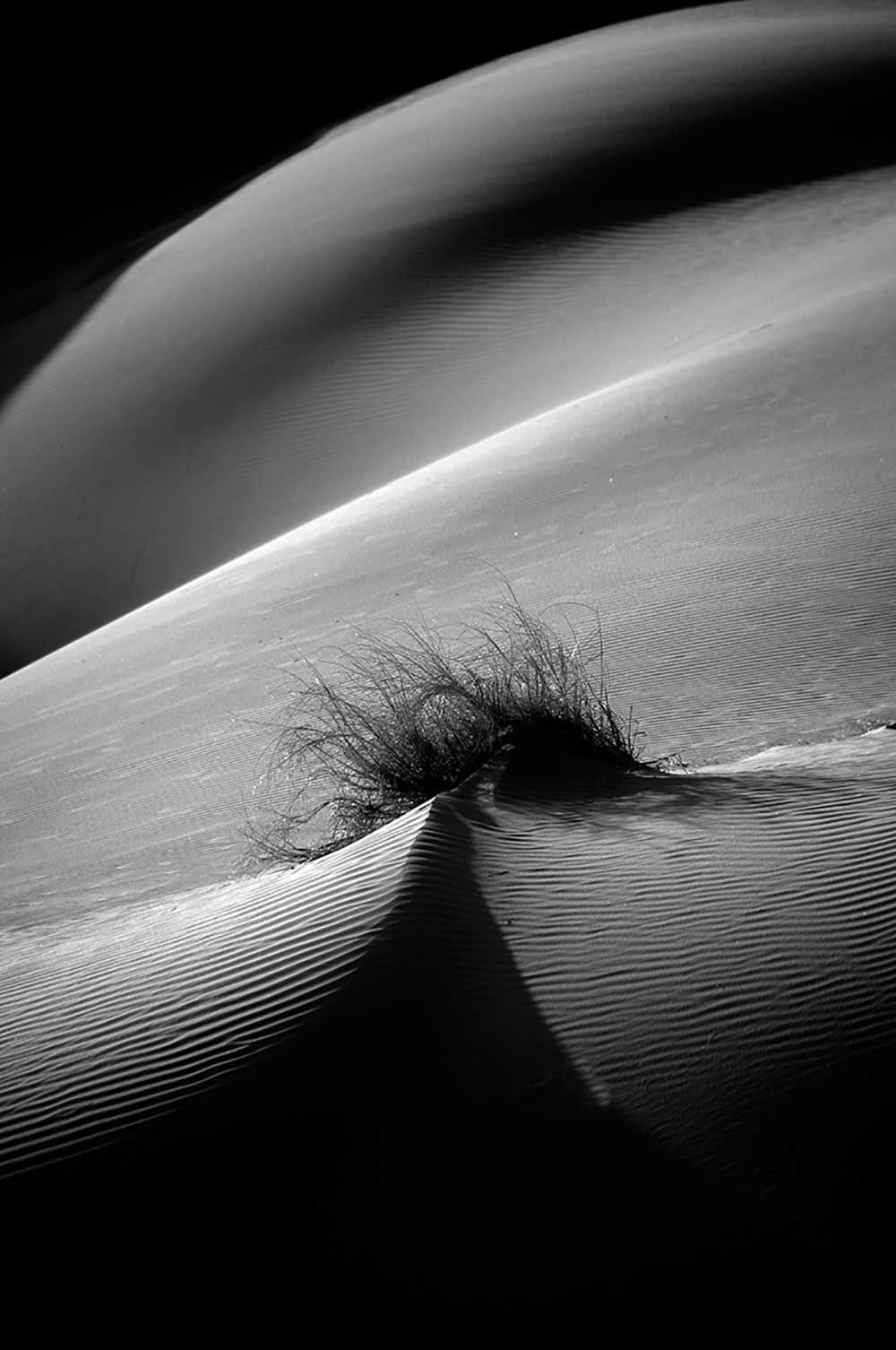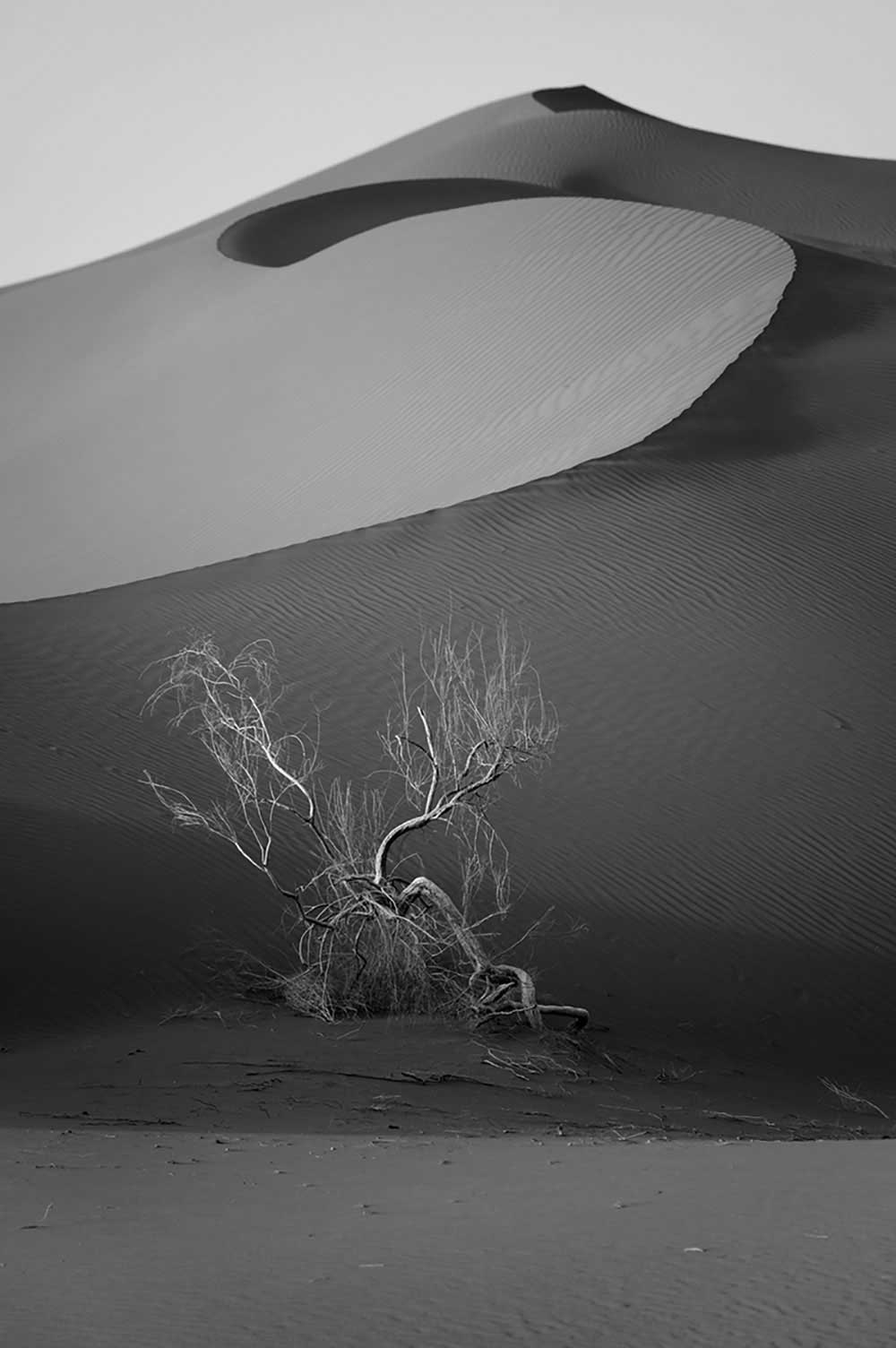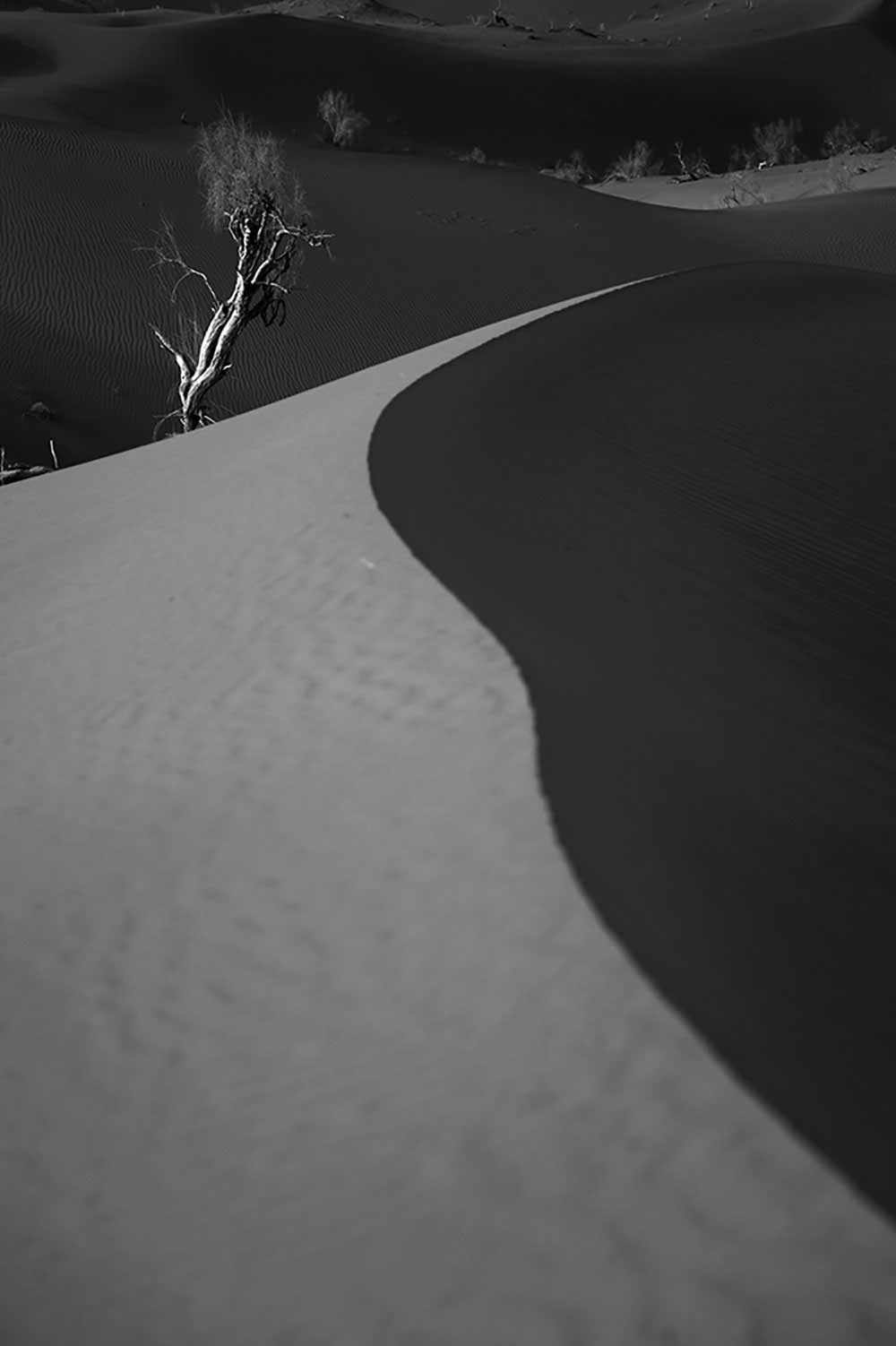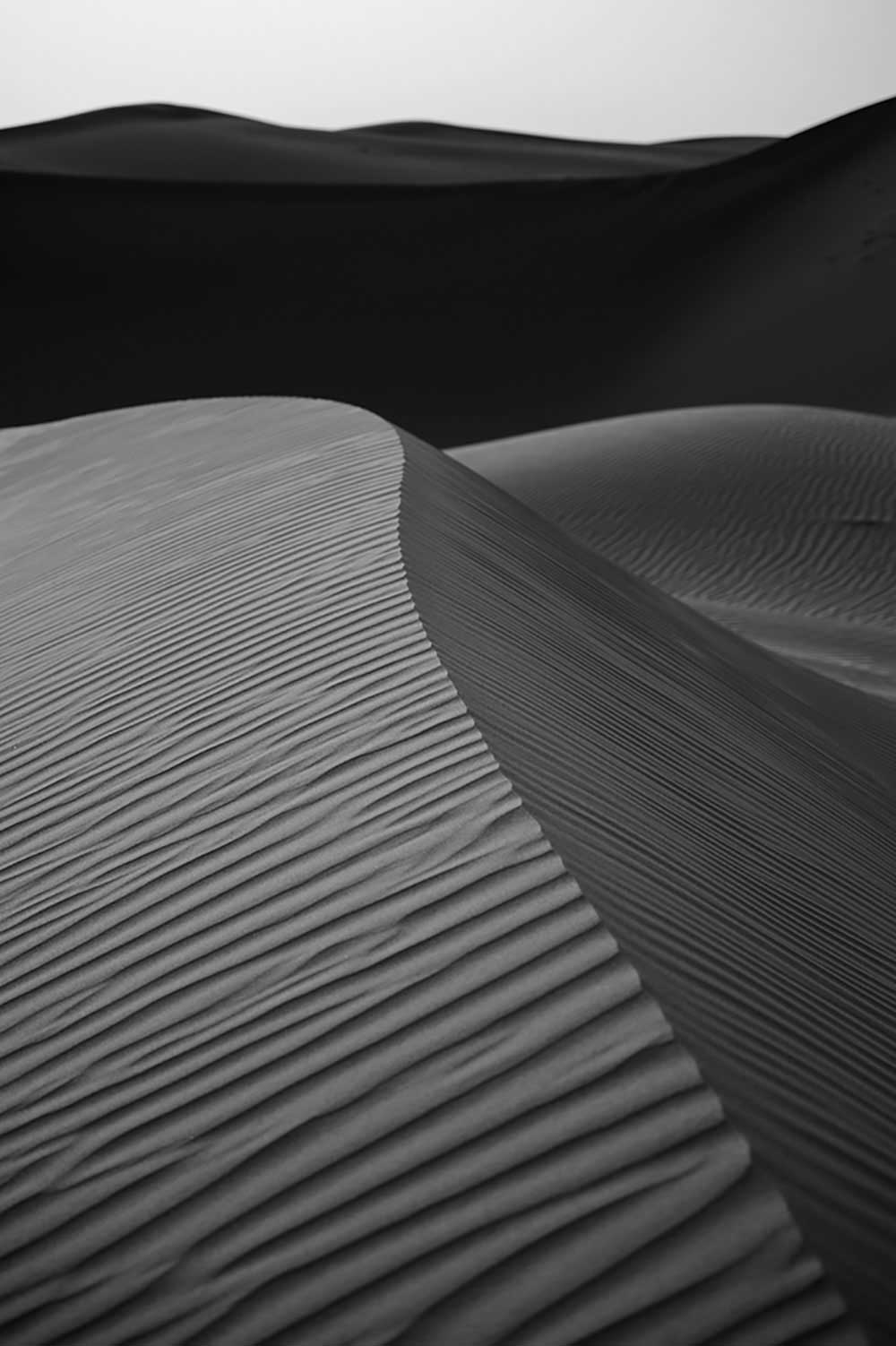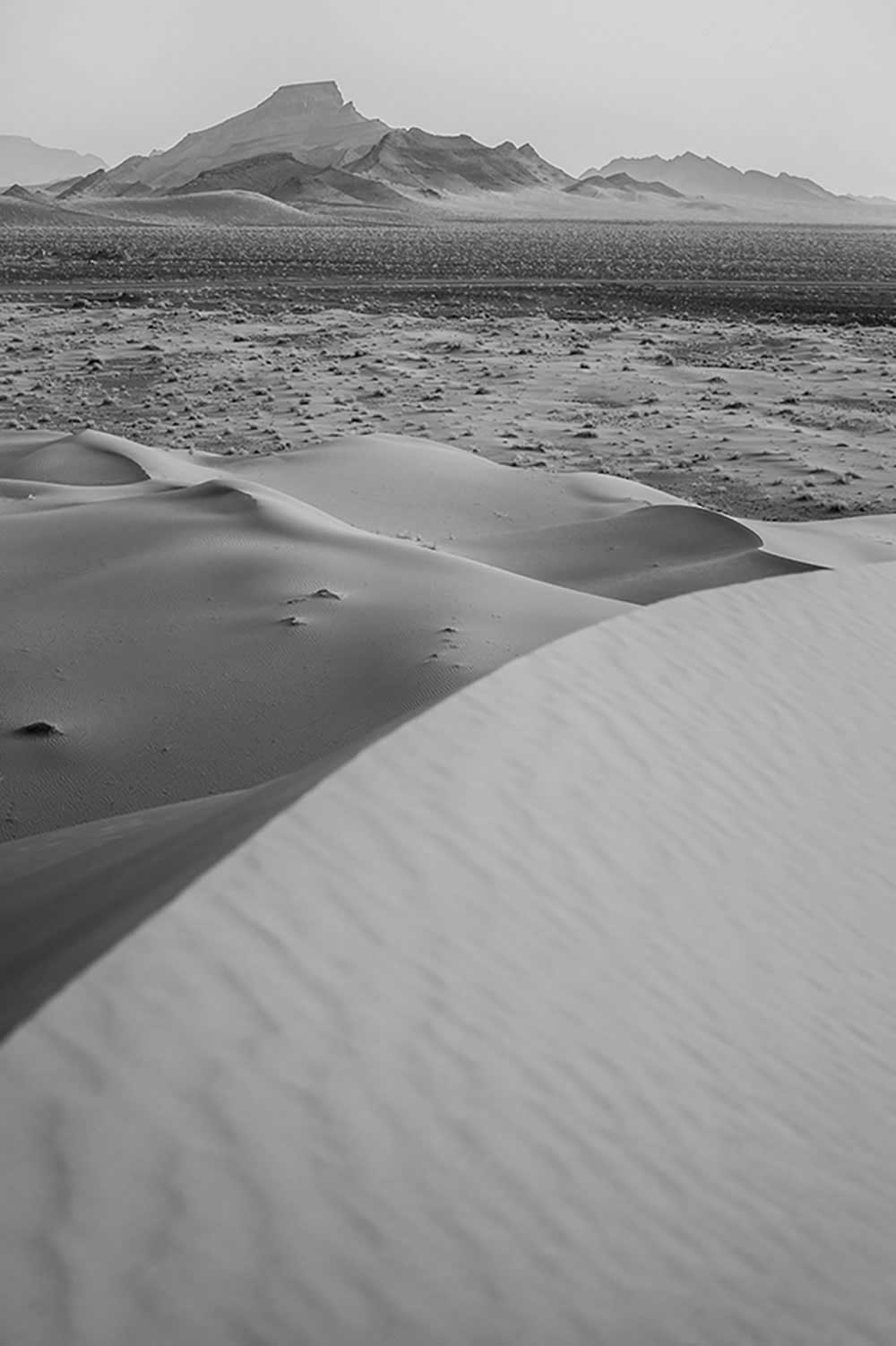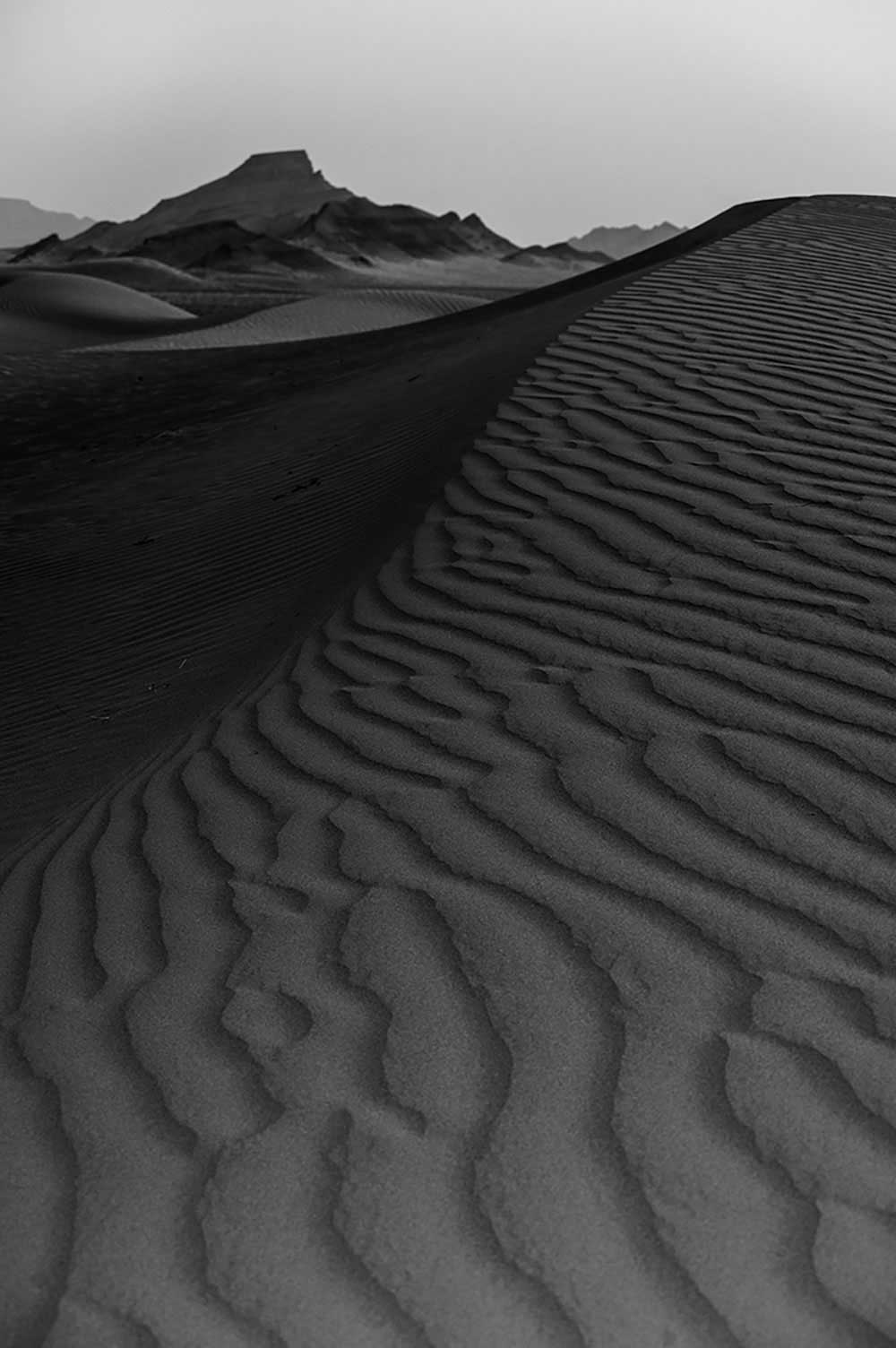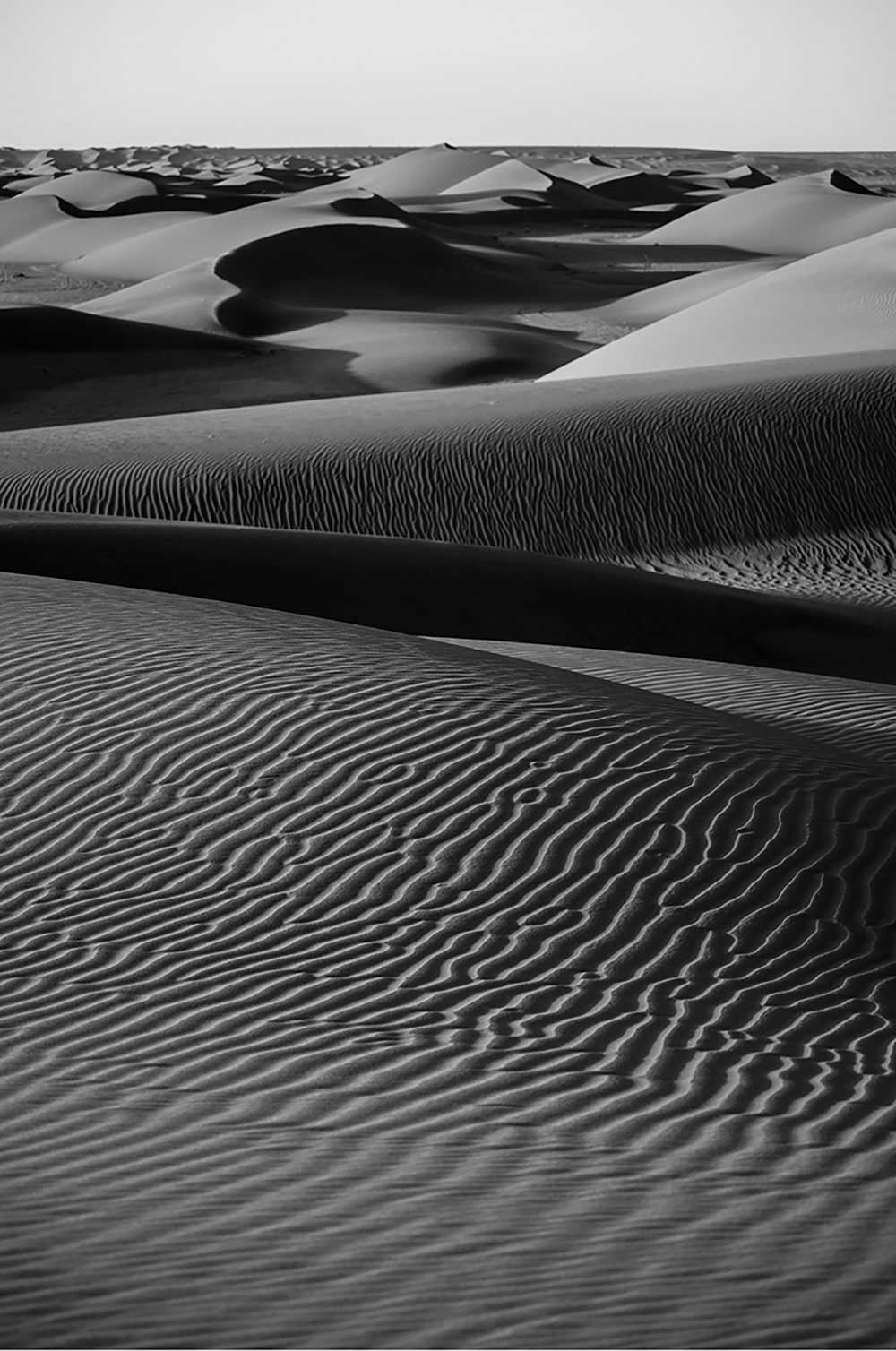I depict the aesthetics of nature in black and white to deliver certain universal feelings.
Feelings that a photograph in color washes out. Feelings that every human is able to translate from visual poetry to an introspective understanding of the world that surrounds us: roaring silence, violent calmness, wild meditation. What we see is raw, pure and sensual. It is filled with sadness, fright, and delight. Universal reflections that resonate with every human being on earth. Watching the silent shadows of the desert make you see yourself for what you are.
To this day, it is 10 years that I regularly travel in the Iranian desert. It was an experienced nature adventurer who first suggested that I should go in the desert. Together with a friend, we set off, looking for a new nature experience. Back then, it was not photography that pulled me into this adventure but rather the desert itself: this spectacle of nature. Until this day, I gladly travel several thousand kilometers from Germany to stay in the Iranian desert for at least a couple of days.
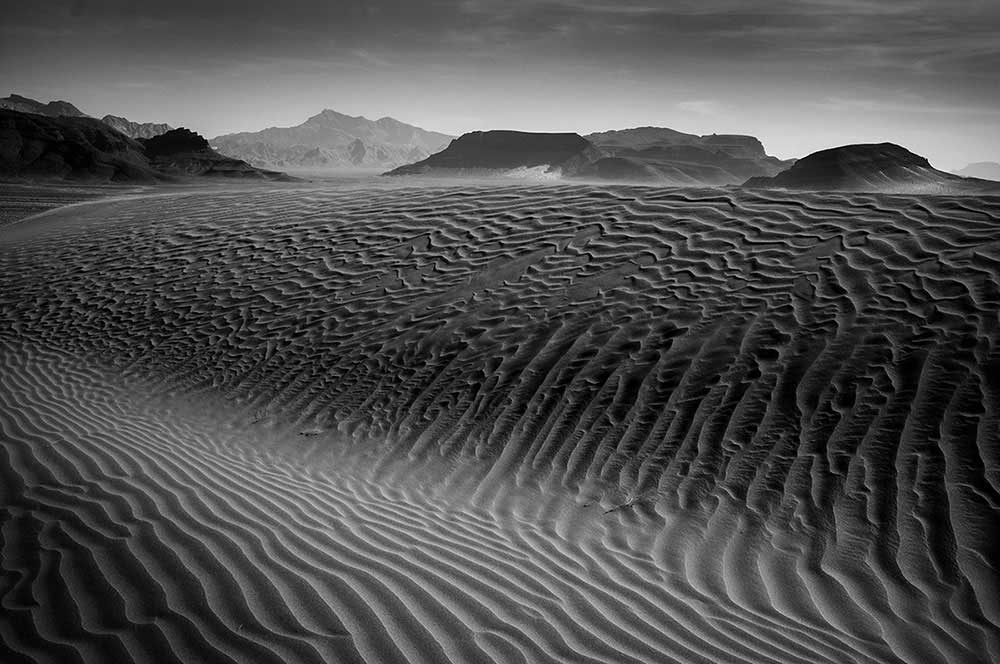
During the first trip, I understood that the desert was significantly different from every nature experience that I had to that point – mountains, seas, valleys, rivers or forests. The desert is dominated by an intense, deep, all-consuming silence. It is constantly wrestling with existential dichotomies: life and death, drought and humidity, heat and cold, light and shadow. It seduces with its softness and there is a violence that lacks any romanticism. I might be sleeping peacefully one moment and the next, I need to seek shelter from a roaring sandstorm.
Every year I return to the Iranian Kavir Desert and depart far from oases and desert villages into its heart to devour its silent suspense. One result of these retreats is this ongoing project “Shadows of Silence”: a series of black-and-white shots taken to invite the introspection I described. This project has received recognition in international photography awards.
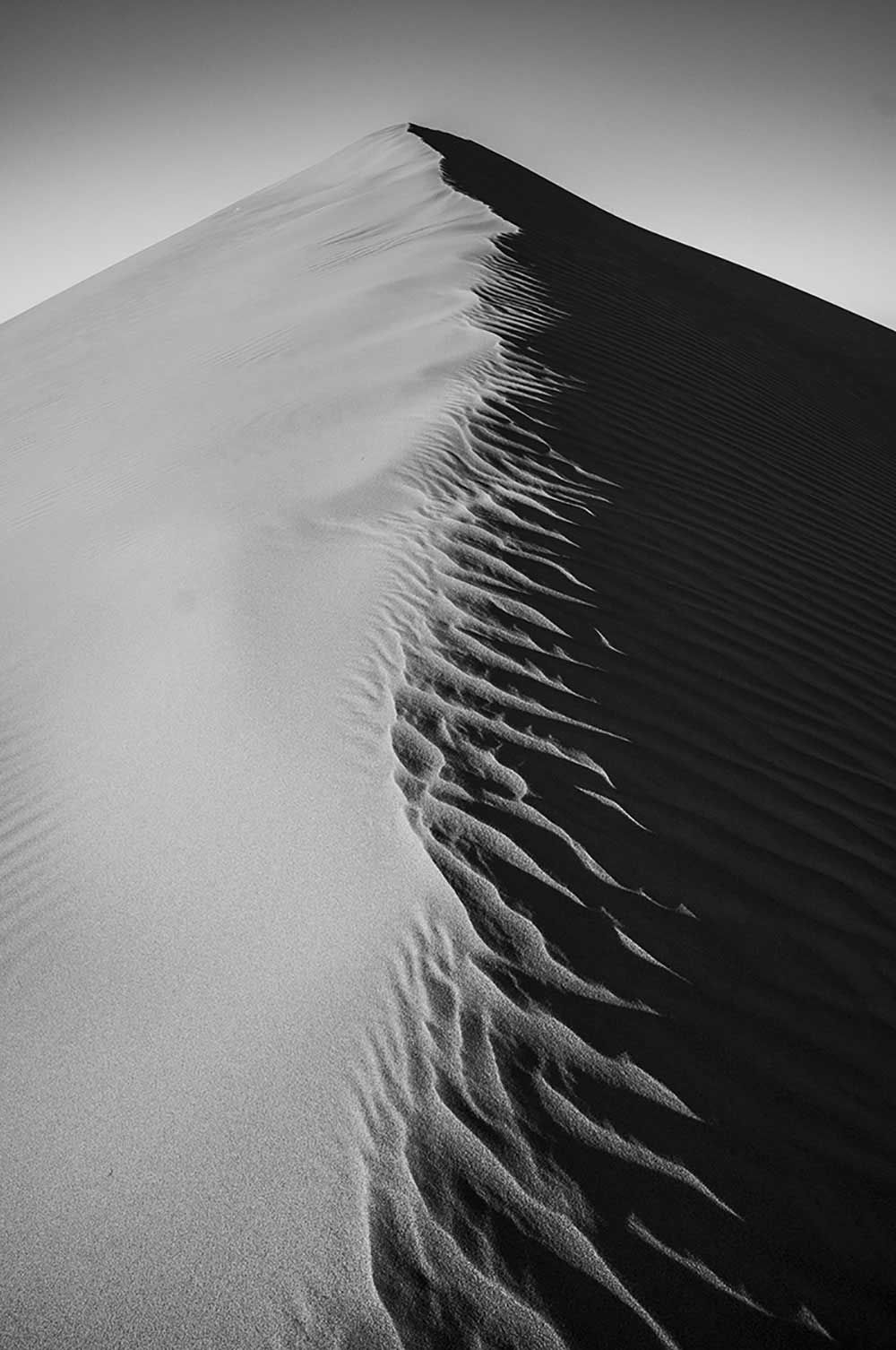
A future project that is connected to “Shadows of Silence” deals with the relationship between the desert nature and its inhabitants: how do they deal with the unforgiving environment; how does the desert shape their characters and culture?
Basim Ghomorlou, born in 1984, is an Iranian photographer who focuses on Nature and Social Documentary. His dominantly back and white photographs include digital work; however, his specialty is analog photography. Since 2000 he has traveled Iran’s nature, urban and rural areas to capture a country in transition. In 2011 he organized a first-ever photo exhibition in a remote village in Khorasan (Iran). In 2016 he moved to Germany to continue with new and ongoing projects.
Basim presented his work in solo exhibitions in the Iranian Artists’ Forum in Tehran (Iran), the Isfahan Museum of Contemporary Art in Isfahan (Iran), the University of Bonn (Germany) (among other places) and has collaborated with artists in the Cinema Galeries in Brussels (Belgium), the Médiathèque André Malraux in Strasbourg (France) and many other exhibitions. His first book is set to be published in autumn 2019. [Official Website]



